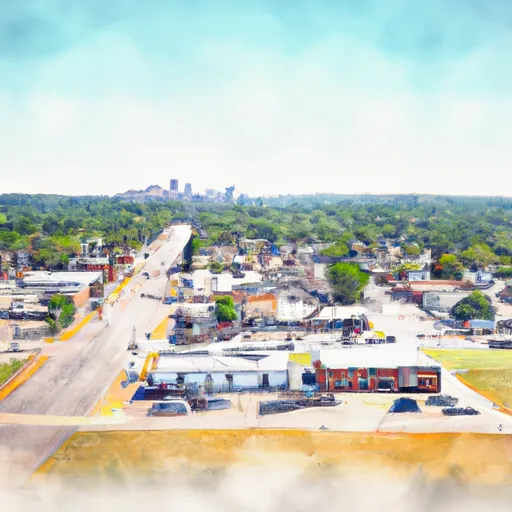-
 Snoflo Premium
Snoflo Premium
Get unlimited access to all our content
With no Ad interruptions! - Start Your Free Trial Login with existing account
Douglas
Eden Index
Climate
8.3
•
Recreation
•
Community
•
Safeguard
3.3/10

Douglas, Oklahoma is a small town located in northern Oklahoma. The climate in Douglas is typical of the southern Great Plains, with hot summers and cold winters. The town lies within the Cimarron River watershed, with the river flowing just south of town. The hydrology constituents of this area include the Cimarron River, as well as several creeks and small streams that feed into it. Outdoor recreation opportunities in Douglas and the surrounding area include fishing and hunting, as well as hiking and camping in nearby state parks such as Great Salt Plains State Park and Roman Nose State Park.
What is the Eden Index?
The Snoflo Eden Index serves as a comprehensive rating system for regions, evaluating their desirability through a holistic assessment of climate health, outdoor recreation opportunities, and natural disaster risk, acknowledging the profound impact of these factors on livability and well-being.
Climate Health Indicator (CHI): 8.3
Douglas receives approximately
846mm of rain per year,
with humidity levels near 81%
and air temperatures averaging around
16°C.
Douglas has a plant hardyness factor of
7, meaning
plants and agriculture in this region tend to thrive during the non-winter months.
By considering the ideal temperature range, reliable water supplies, clean air, and stable seasonal rain or snowpacks, the Climate Health Indicator (CHI) underscores the significance of a healthy climate as the foundation for quality living.
A healthy climate is paramount for ensuring a high quality of life and livability in a region, fostering both physical well-being and environmental harmony. This can be characterized by ideal temperatures, reliable access to water supplies, clean air, and consistent seasonal rain or snowpacks.
Weather Forecast
Streamflow Conditions
Lower Cimarron
Area Rivers
Lower Cimarron
Snowpack Depths
Lower Cimarron
Reservoir Storage Capacity
Lower Cimarron
Groundwater Levels
Recreational Opportunity Index (ROI):
The Recreational Opportunity Index (ROI) recognizes the value of outdoor recreational options, such as parks, hiking trails, camping sites, and fishing spots, while acknowledging that climate plays a pivotal role in ensuring the comfort and consistency of these experiences.
Access to outdoor recreational opportunities, encompassing activities such as parks, hiking, camping, and fishing, is crucial for overall well-being, and the climate plays a pivotal role in enabling and enhancing these experiences, ensuring that individuals can engage in nature-based activities comfortably and consistently.
Camping Areas
| Campground | Campsites | Reservations | Toilets | Showers | Elevation |
|---|---|---|---|---|---|
| Schrock Park | None | 1,305 ft | |||
| Argonia River Park | 14 | 1,223 ft | |||
| Wellington Lake East Rec Area | None | 1,225 ft | |||
| Wellington Lake West Rec Area | None | 1,216 ft | |||
| Lake Afton Park | None | 1,381 ft |
Nearby Ski Areas
Catastrophe Safeguard Index (CSI):
The Catastrophe Safeguard Index (CSI) recognizes that natural disaster risk, encompassing floods, fires, hurricanes, and tornadoes, can drastically affect safety and the overall appeal of an area.
The level of natural disaster risk in a region significantly affects safety and the overall livability, with climate change amplifying these risks by potentially increasing the frequency and intensity of events like floods, fires, hurricanes, and tornadoes, thereby posing substantial challenges to community resilience and well-being.
Community Resilience Indicator (CRI):
The Community Resilience Indicator (CRI) recognizes that education, healthcare, and socioeconomics are crucial to the well-being of a region. The CRI acknowledges the profound impact of these elements on residents' overall quality of life. By evaluating educational resources, healthcare accessibility, and economic inclusivity, the index captures the essential aspects that contribute to a thriving community, fostering resident satisfaction, equity, and social cohesion.

